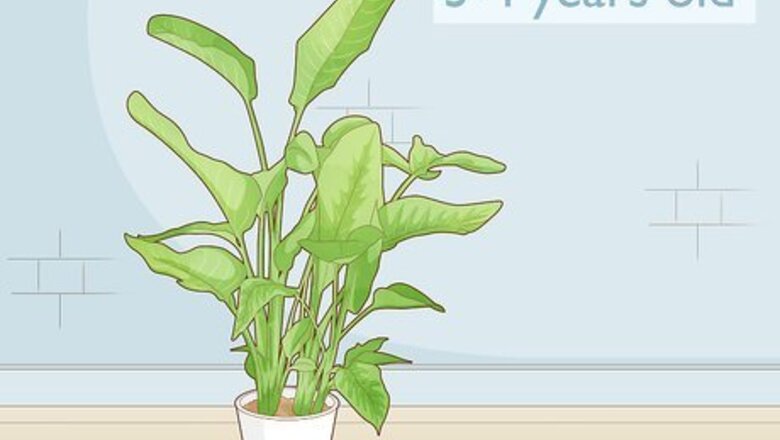
views
Responding If the Flowers Won’t Bloom
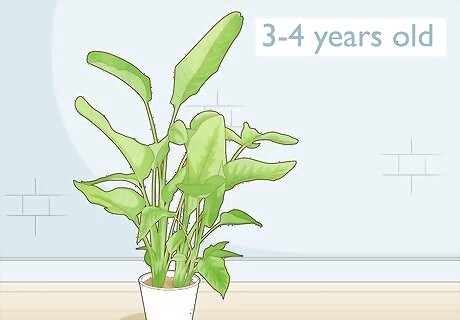
Check the age of your plant to know if it should be blooming. Birds of paradise only start blooming after they’re about 3-4 years old. If your plant isn’t blooming, first confirm its age before taking further steps. If the plant is younger than this, then carry on with your normal care schedule to keep the plant healthy. If the plant is the correct age, then take some steps to encourage blooming. When you buy a new plant, write down the purchase date. Ask an employee when it was planted so you have an accurate age. If you planted the seeds yourself, then it will be at least a few years before the flowers bloom. Be patient and let the plant grow.
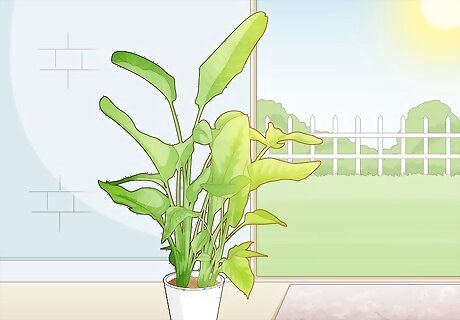
Move your plant to a sunnier location. Lack of sun is one of the main reasons birds of paradise fail to flower. Monitor how much sun your plant gets. If it doesn’t hit the 6-hour minimum, then move it to a new location with more direct sunlight. Alternatively, transfer the plant to a pot and move it along with the sun throughout the day. This maximizes the sun it receives. Even when the plant is inside for the winter, place it near a window to get as much sun as possible. Check which windows in your home get the most sun and place the plant there. South-facing windows usually get the most sunlight.
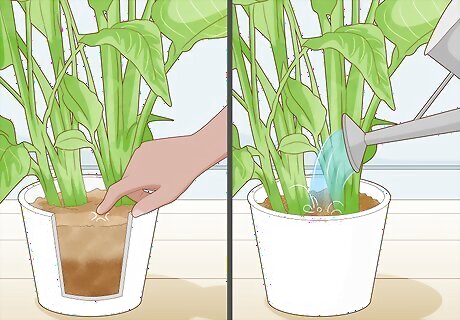
Wait until the soil is dry before watering during the growing season. Sometimes overwatering can prevent a bird of paradise from flowering. Try reducing your watering schedule during the growing season and let the soil dry out on the surface. Then only water when the soil is dry. Let the soil dry about halfway down the pot. Don't let the soil dry completely to the bottom or the plant will start wilting. If you notice any wilting or discoloration in the plant, then it needs more water. Increase your watering schedule so the plant doesn't die.

Switch to a 10-30-10 fertilizer high in phosphorus. Phosphorus encourages flower growth in plants. If your plant isn’t flowering, then find a fertilizer with a higher phosphorus content. Look for a product marked 10-30-10, meaning that it is 30% phosphorus. Use that every 2 weeks instead of the general purpose fertilizer. The numbers on fertilizers indicate the amount of nitrogen, phosphorus, and potassium, in that order. A 10-10-10 mixture has equal amounts of all, while a 10-30-10 is higher in phosphorus. Check application instructions on your new fertilizer and follow them. Don’t use the phosphorus fertilizer in the rest of your garden unless all the soil is phosphorus-deficient. This can deplete healthy soil.
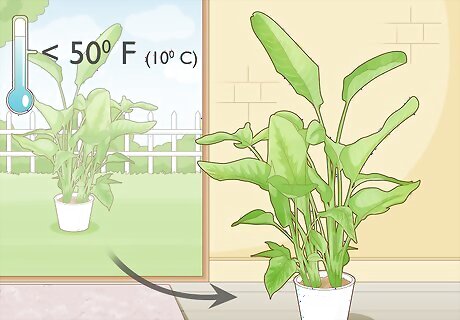
Bring the plant inside if the temperature is regularly below 50 °F (10 °C). If the temperature regularly drops below 50 °F (10 °C) outside, then the growing season has probably passed. No flowers will bloom past this point. Take the plant inside to let it rest for the next season. Make sure to put it on a winter watering schedule and leave it in direct sunlight. Birds of paradise are fairly resilient, and can tolerate temperatures as low as 24 °F (−4 °C) for a short time. Prolonged exposure will kill any flower buds, however. If you live in a warm climate where temperatures stay above 40–50 °F (4–10 °C) most of the time, then you can leave the plants outside.
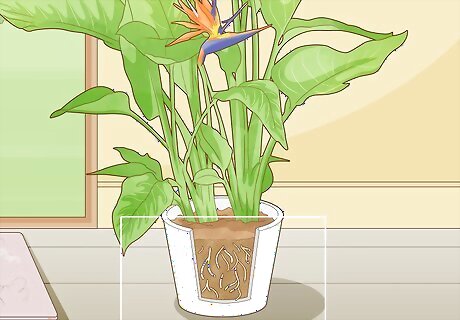
Be patient and let the plants roots grow in. Remember that birds of paradise take several years for their roots to grow in before they bloom. If the root system isn’t mature yet, then all these techniques won’t make the plant flower. Continue with your regular care schedule until the plant is mature enough to bloom.
Growing a Healthy Plant
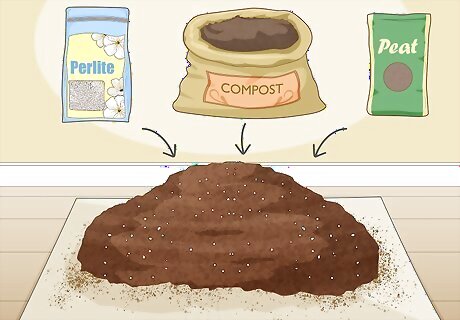
Use organic soil with good drainage. If you’re planting a new bird of paradise or repotting it, get a rich, organic soil mixture. Good ingredients to look for in a mixture are peat, compost, and perlite. Make sure the soil has no clay or sand, which make it less drainable. Don’t pack the soil tightly. This will make it drain less efficiently. Use a pot with holes at the bottom for drainage. Otherwise, the plant could get waterlogged.
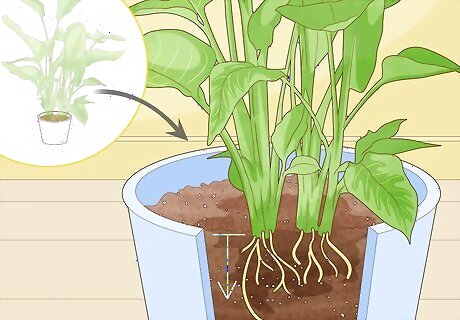
Position the plant so its roots are just below the soil surface. If you’re repotting a bird of paradise, don’t bury its roots deep in the soil. This discourages flower growth. Leave the roots just below the soil level to help the flowers bloom better. If you’ve already planted the roots deep, carefully dig the plant up and reposition it so the roots are shallower. If you raised the plant from a seed, then the roots will probably stay near the surface naturally.
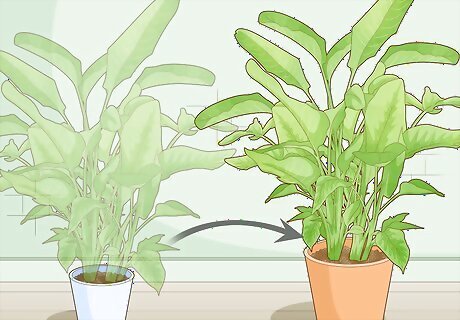
Leave the plant in a pot to encourage root growth. Birds of paradise bloom best when their roots grow into a tight cluster. Leaving the plant potted makes this process faster by stopping the roots from spreading out over a large area. If the plant gets too large for its pot, replant it in a larger one. Remember to use an organic soil mixture to repot it. Flowers will still bloom if you put the plant in the ground, but it will take longer for the root clusters to form.
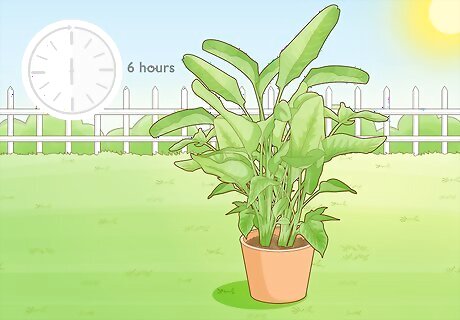
Make sure the plant gets at least 6 hours of sunlight per day. Birds of paradise require sunny conditions to bloom. Find the sunniest location on your property and place the plant there. If the plant is in a pot, it’s easy to move around your property as the sun shifts throughout the day. If your plant is inside, make sure it’s near a window in direct sunlight.
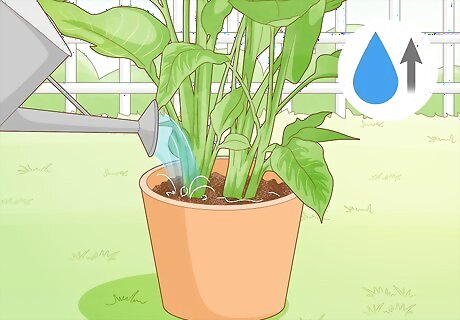
Keep the soil moist during the spring and summer months. During the growing season, water the plant on a regular basis. Keep the soil moist at all times. When it starts drying, water again. If water pools on the surface of the soil, you’re watering too much. Let the soil drain and dry a bit, then use less water for the next watering session. To avoid over-watering, you can use a spray bottle to wet the soil rather than pouring water in.
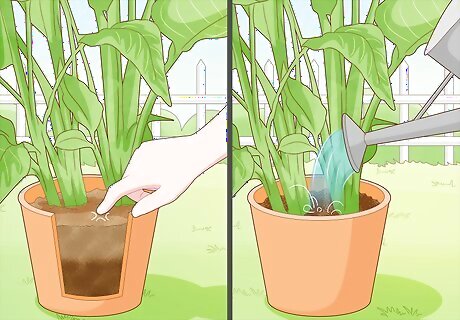
Let the soil dry out before watering again in the winter. Birds of paradise require less water during the winter months. Don’t water until the soil dries out. When you do water, only use enough to moisten the soil to avoid over-watering. Press your finger slightly below the soil surface to check the moisture level. If the soil still feels wet below the surface, wait another day before watering.
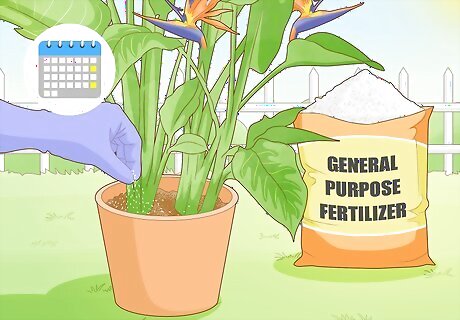
Apply a general-purpose fertilizer every 2 weeks during the growing season. Keep the plant well-nourished during the growing season. Use a balanced formula with equal amounts of phosphorus, nitrogen, and potassium. Feed the plant every 2 weeks for the best results. Apply the fertilizer in the morning or evening, not in the heat of the day. Some fertilizer products have specific application instructions, so use it according to the directions.

















Comments
0 comment